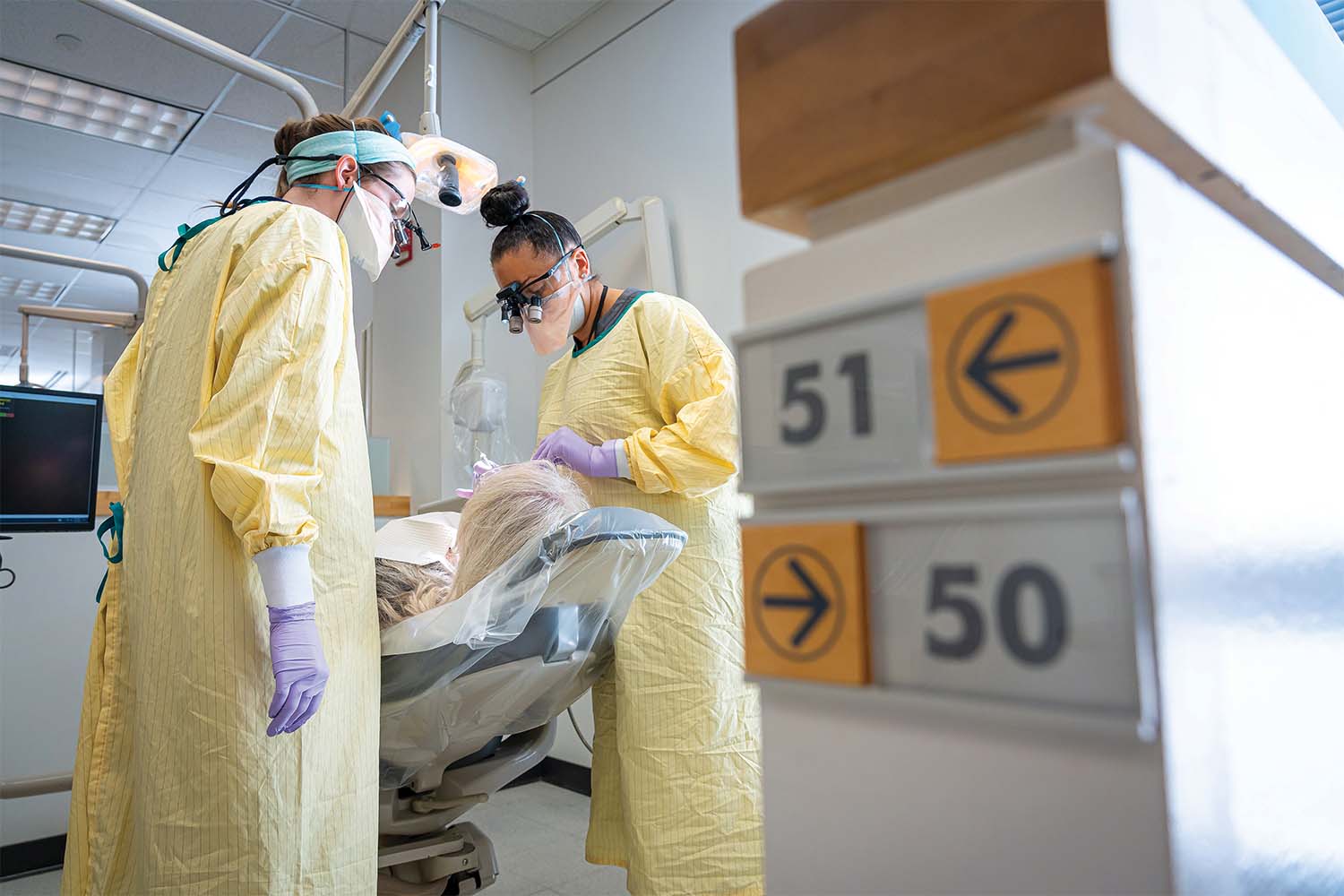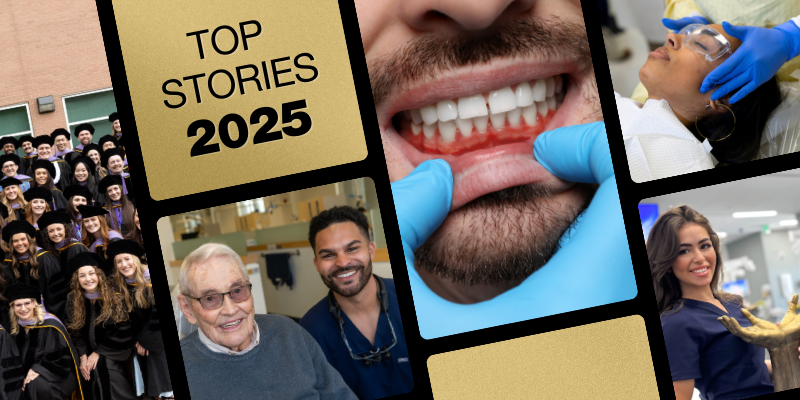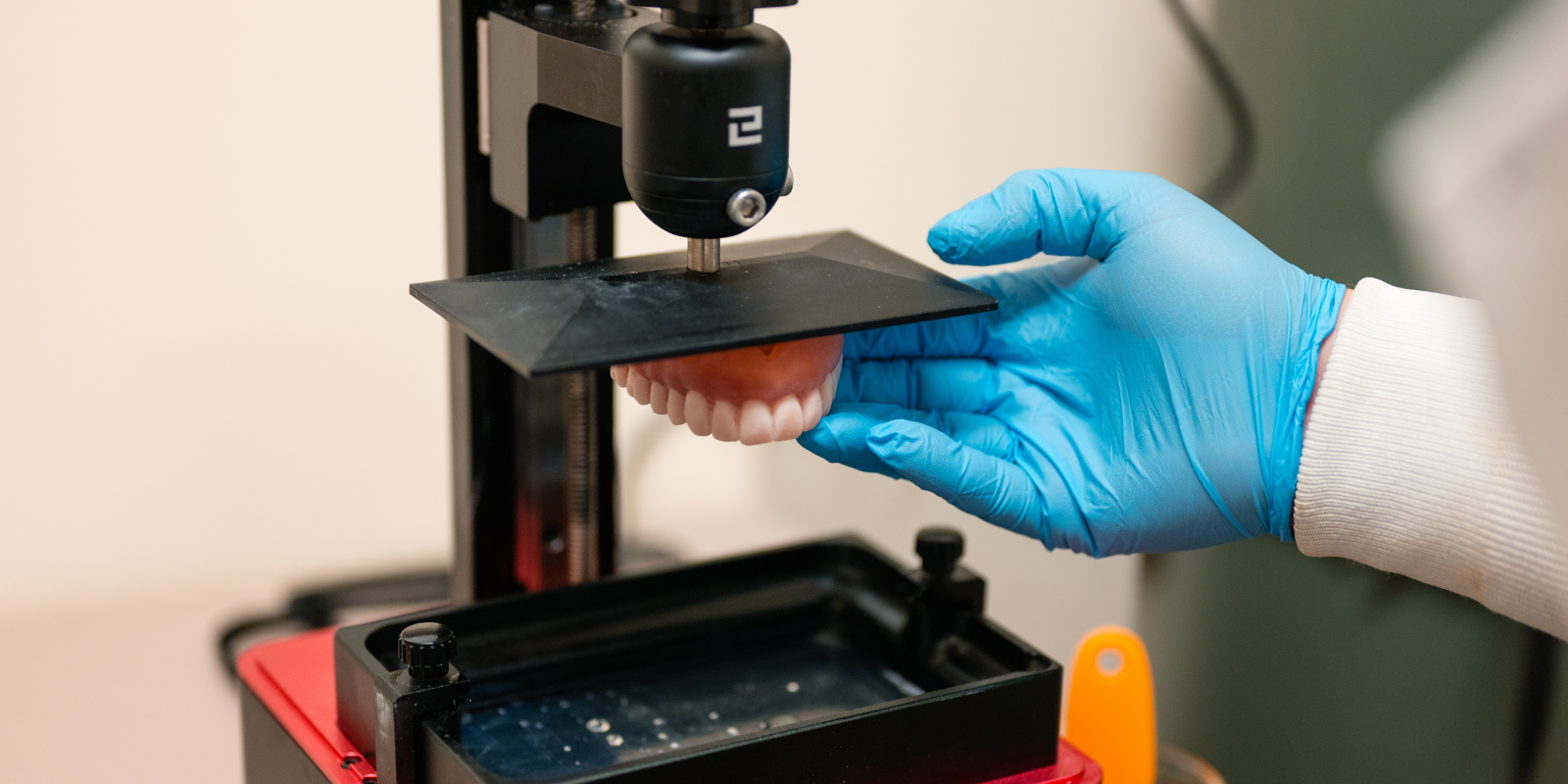As with all forms of healthcare, dentistry is changing rapidly. Factors such as new technologies, higher-quality data and a wider adoption of person-centered care models make our healthcare systems more cost-effective while delivering better outcomes.
Fundamentals for the Future
“A focus on person-centered care is critical to educating future-ready graduates,” said Dean Denise Kassebaum, DDS, MS. “It’s at the root of every initiative in the school-wide innovation agenda we are pursuing. It’s what our professors are passionate about teaching. And it’s why our students want to study here in our school-based and community-based care settings.”
For the SDM, that means striving to increase the unique lived experiences and perspectives of faculty, staff and learners as the demographics of communities in the United States change. It means integrating oral and systemic healthcare through interprofessional interactions as our health systems change. It also means deploying artificial intelligence (AI) and other emerging technologies to teach students how to perform clinical assessments and procedures that allow providers to customize treatment for a patient’s unique needs.
The World Health Organization frames the global challenge as fundamentally changing the basis of patient engagement from “What’s the matter with you?” to “What matters to you?” The system-wide implications for healthcare include rethinking how healthcare services are organized, managed and delivered.
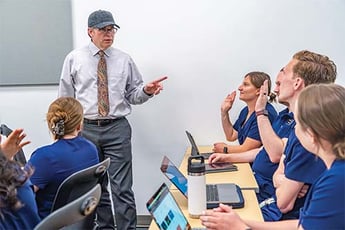 Bruce Dye, DDS, MPH, talks with students about public health dentistry as a career.
Bruce Dye, DDS, MPH, talks with students about public health dentistry as a career.
Bruce Dye, DDS, MPH, is a professor and chair of the Department of Community Dentistry and Population Health. He framed the problem this way: “People experience oral health differently not because of actions directly related to their teeth, but as a result of other determinants of health—physical, genetic, socioeconomic, behavioral. We’re equipping our students with a much greater understanding of the underlying causes of disease while also helping them appreciate that empathy for the whole person is essential to high-quality care.”
Cutting-Edge Research Ecosystem
Dye’s research activities in oral health epidemiology and public health practice are part of a larger SDM research ecosystem that comprises community dentistry and population health, craniofacial biology, diagnostics and surgery, and orthodontics as well as pediatric, digital and regenerative dentistry. “Our entire dental school community benefits greatly from the SDM’s collocation with CU schools of medicine, nursing, pharmacy and public health,” he explained.
The SDM currently conducts research in nine areas ranging from biomedical sciences and cancer biology to human medical genetics and pharmaceuticals. Graduate students work with SDM research faculty who hold joint appointments in the CU School of Medicine, and postdoctoral fellows can apply to work directly with individual research faculty members. Incoming first-year dental students have the opportunity to apply for the Summer Research Scholarship Program, an eight-week immersion in basic science or clinical research with an SDM faculty mentor. In 2023, the school hosted its 38th annual Research Day featuring five plenary presentations and dozens of student researchers at an afternoon poster session.
New research projects are funded through the SDM’s Innovation Committee, which supports work in areas such as precision biomaterials, biobank sampling of craniofacial differences and AI-guided diagnostics and decision-making. “The push for advanced technologies in dental practice is coming from practitioners,” said Senior Associate Dean for Research Jeffrey Stansbury, PhD. “They experience the advantages of digitally derived processes firsthand, and they recognize that technologies like additive manufacturing can increase patient access, improve outcomes and reduce costs. Keeping research at the forefront of our mission is critical to ensuring that our students are practice-ready when they graduate.”
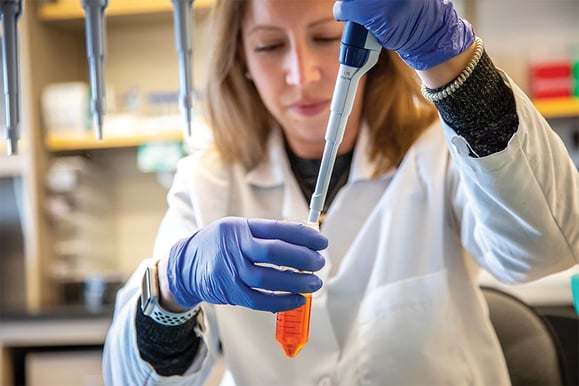 Research from the laboratory of Assistant Professor Katherine Fantauzzo, PhD, served as preliminary data for an R01 award from the NIDCR in July 2022 totaling more than $2.3 million across five years.
Research from the laboratory of Assistant Professor Katherine Fantauzzo, PhD, served as preliminary data for an R01 award from the NIDCR in July 2022 totaling more than $2.3 million across five years.
A Focus on Digital Dentistry
With the commitment of the administration, the SDM Innovation Committee set a goal of acquiring digital technologies to enhance patient care and preclinical and clinical education experiences. This commitment ensures that cone-beam computed tomography (CBCT) machines are available on all floors of the clinical building, and that students and residents are continuously introduced to new digital technologies.
Facilities that support these technologies include the Digital Design Studio (DDS) and the Dental Advanced Simulation Hub (DASH).
Led by Digital Dentistry Program Director David Gozalo, DDS, MS, and through the efforts of other faculty and staff, the DDS opened on level 2 of the dental school. This resource features the latest technology in 3D printing and milling machines connected to the latest design software.
While the DDS supports clinical activities, the DASH is the preclinical facility where students learn to produce start-to-finish digital solutions for future patient care.
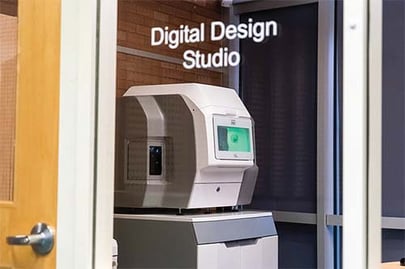
The Digital Design Studio features state-of-the-art milling and 3D printing technologies.
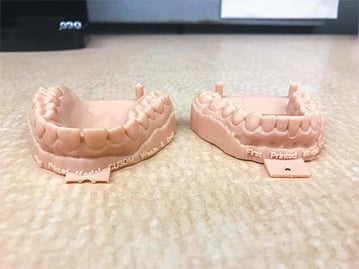
Reinventing Educational Platforms
On the pedagogical front, Senior Associate Dean of Academic Affairs and Innovation Tracy de Peralta, DMD, PhD, MClinEd, and her colleagues are equally ambitious in their innovations. “When it comes to educational tools and methods,” she said, “we are developing approaches to teaching and learning that are as immersive and tech-savvy as the work of our research colleagues. We practice education itself as an evidence-based science here.” That mindset has led to recognition of the SDM as an Apple Distinguished School for its continuous innovation in learning, teaching and the overall school environment.
De Peralta and her SDM colleagues also partnered with the CU Anschutz Office of Strategic Initiatives to introduce the campuswide Education Studio, an initiative that encompasses all six schools and colleges on the CU Anschutz Medical Campus. Recent SDM projects include one of the first virtual reality suites among U.S. dental schools, an immersive learning suite with haptics technology and the DASH.
Taking Service to a New Level
Another pillar of the SDM’s future rests on the human-centered values that have defined it for half a century. “Our dedication to service is well known and very attractive to applicants,” said Associate Dean of Student Affairs and Admissions Eric Mediavilla, DDS ’00. “We deliver on our commitment to members of surrounding communities with numerous programs that teach our students to respect and value every person who sits in their chair. They learn trust-building and personcentered decision-making right along with the mastery of technical skills.”
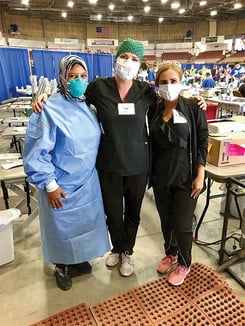
Esraa Salem, DDS (ISP '22), BDS; Assistant Professor Manti Lehn, RDH '06;
and Ashjan Hasan, DDS (ISP '22), BDS volunteer at COMOM 2022 in Pueblo, Colorado.
One of the SDM’s community-based programs, the Advanced Clinical Training and Service (ACTS) program, allows students to perform hundreds of treatment procedures and patient visits by the time they graduate. A significant number of students have reported an interest in continuing to treat these populations and an intention to practice in the public sector after graduation. SDM students also have opportunities to deliver additional pro bono or low-cost services through the Colorado Mission of Mercy (COMOM), Kids in Need of Dentistry (KIND) and wellness events in surrounding communities.
“As the socioeconomic and cultural landscape continues to evolve in the U.S., our students will be ready and willing to do their best to expand access to high-quality care at sustainable costs,” Mediavilla explained. “At the same time, we are teaching them to care for their own well-being. We want every individual to grow as a human being during their time with us. Their self-worth doesn’t rest solely on academic or professional achievement in this demanding profession. If we do our jobs in honoring the whole person, our graduates will be better prepared to honor the whole person of every patient who crosses their path. That’s one of the most important things we can do for the future of dentistry.”
